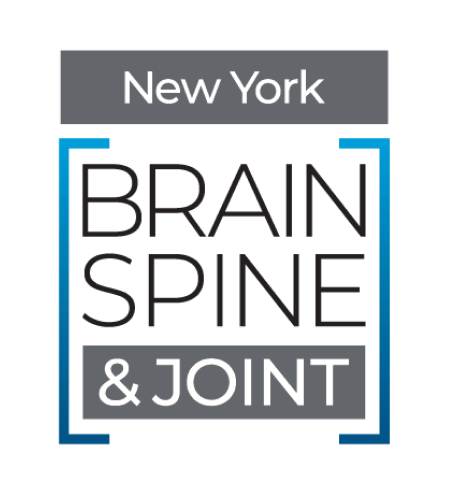Ankle Fracture
Ankle Fractures and Instability: Understanding, Diagnosing, and Treating Ankle Injuries
Ankle fractures and chronic ankle instability are common conditions that can significantly impact mobility, quality of life, and participation in daily activities. Whether resulting from sports injuries, accidents, or degenerative conditions, these ankle problems often require expert evaluation and comprehensive treatment. Below, we provide an in-depth look at the causes, symptoms, diagnostic methods, and available treatments—including surgical interventions—for ankle fractures and instability, alongside guidelines for optimal recovery and maintaining ankle health.
Understanding the Ankle Structure
The ankle is a complex joint that includes bones, ligaments, tendons, and cartilage, working together to provide stability and flexibility. The ankle joint primarily involves three bones: the tibia (shinbone), fibula (the smaller lower leg bone), and talus (foot bone). Ligaments surrounding these bones stabilize the joint, while tendons connect muscles to bones, enabling movement and balance.
What Causes Ankle Fractures and Instability?
Trauma and injury are the primary causes of ankle fractures and instability:
- Acute Injuries: Falls, sports collisions, vehicle accidents, or sudden twisting motions can lead to fractures or severe ligament damage.
- Repeated Ankle Sprains: Chronic ankle instability often results from multiple sprains or incomplete healing, leading to weakened ligaments and persistent instability.
- Overuse and Degeneration: Continuous stress, improper footwear, or previous untreated injuries may lead to weakening and eventual fractures or instability.
Who is at Risk?
Several factors can increase the likelihood of ankle injuries, including:
- Active participation in sports, especially high-impact or contact sports (e.g., basketball, soccer, football)
- Occupational hazards involving physical labor or repetitive motion
- Older adults experiencing reduced bone density and balance issues
- Individuals with a history of previous ankle injuries
- Obesity, as excess weight increases stress on ankle joints
Common Symptoms of Ankle Fractures and Instability
Symptoms may vary based on injury severity and may include:
- Immediate sharp pain after trauma
- Swelling, bruising, or visible deformity
- Difficulty or inability to bear weight
- Chronic ankle instability or a sensation of the ankle "giving way"
- Limited range of motion and persistent discomfort
Diagnosing Ankle Fractures and Instability
Accurate diagnosis typically involves:
- Medical History and Physical Examination: A thorough evaluation of symptoms, recent injuries, and activity levels. Physicians examine for swelling, tenderness, deformities, and stability.
- Imaging Tests:
- X-rays: Identify fractures, alignment issues, and severity.
- MRI or CT Scan: Provide detailed views of ligament and soft tissue injuries or complex fractures.
- X-rays: Identify fractures, alignment issues, and severity.
- Stress Tests: Evaluating ligament stability by applying controlled pressure to the joint.
Non-Surgical Treatment Approaches
Many ankle fractures and instability cases respond effectively to conservative treatments, such as:
- Immobilization: Casts, braces, or walking boots help fractures heal and ligaments recover.
- Medication: Nonsteroidal anti-inflammatory drugs (NSAIDs) reduce pain and swelling.
- Physical Therapy: Strengthening exercises, balance training, and mobility rehabilitation to restore joint stability and prevent re-injury.
- Lifestyle Modifications: Appropriate footwear and activity adjustments minimize future injuries.
When Surgery is Needed
Surgical intervention may be required when non-surgical treatments are insufficient, particularly if:
- Fractures are displaced or unstable
- Ligament damage results in significant joint instability
- Chronic instability persists despite rehabilitation
Surgical Treatment Options
- Open Reduction and Internal Fixation (ORIF): Commonly performed to realign bone fragments using plates, screws, or pins.
- Arthroscopy: Minimally invasive procedure to diagnose and treat ligament damage or cartilage injuries.
- Ligament Reconstruction: Repairing or reconstructing damaged ligaments to restore stability.
- Ankle Fusion or Joint Replacement: Recommended in severe cases with significant joint damage or arthritis.
What to Expect During Recovery
- Immediate Postoperative Care: Pain management and immobilization immediately after surgery.
- Physical Therapy and Rehabilitation: Gradual, supervised exercise program to regain strength, flexibility, and stability.
- Long-term Follow-up: Regular check-ups and imaging to monitor healing and prevent complications.
Maintaining Ankle Health and Preventing Re-injury
Reducing the risk of recurrence involves:
- Regular strengthening and balance exercises
- Using supportive footwear during sports and daily activities
- Proper warm-up routines and avoiding uneven surfaces
- Weight management to reduce joint stress
Our Multi-Disciplinary Approach in NYC
Our multi-location, multi-disciplinary medical practice in the New York City metro area offers advanced, comprehensive care for ankle fractures and instability. Our dedicated team—including orthopedic surgeons, podiatrists, physical therapists, and rehabilitation specialists—collaborate to deliver personalized treatment plans using state-of-the-art diagnostic tools and minimally invasive surgical techniques. We aim to restore mobility, alleviate pain, and return patients to an active, fulfilling lifestyle.
Frequently Asked Questions (FAQs)
- Can ankle instability heal on its own?
Mild instability can sometimes improve with rest and rehabilitation, but chronic or severe cases typically require professional intervention to prevent further damage. - How soon can I walk after ankle surgery?
Initial weight-bearing often begins after a few weeks but varies based on injury severity and surgery type. Full recovery can take several months. - Will my ankle fracture lead to arthritis?
Severe fractures or chronic instability may increase the risk of developing arthritis. Early diagnosis and proper treatment can significantly reduce this risk.
Additional Resources
- American Academy of Orthopaedic Surgeons - Ankle Fractures
- National Institute of Arthritis and Musculoskeletal and Skin Diseases - Sprains and Strains
Conclusion
Ankle fractures and chronic instability significantly impact quality of life but are highly treatable with timely, expert care. Our experienced, multi-disciplinary team in the NYC metro area provides individualized, comprehensive treatment options ranging from conservative care to advanced surgical solutions, helping patients recover fully and maintain optimal ankle function and stability.
Disclaimer: This article is intended for informational purposes only. It is not a substitute for professional medical advice, diagnosis, or treatment. Always consult a qualified healthcare provider for guidance on any medical condition or treatment plan.
















